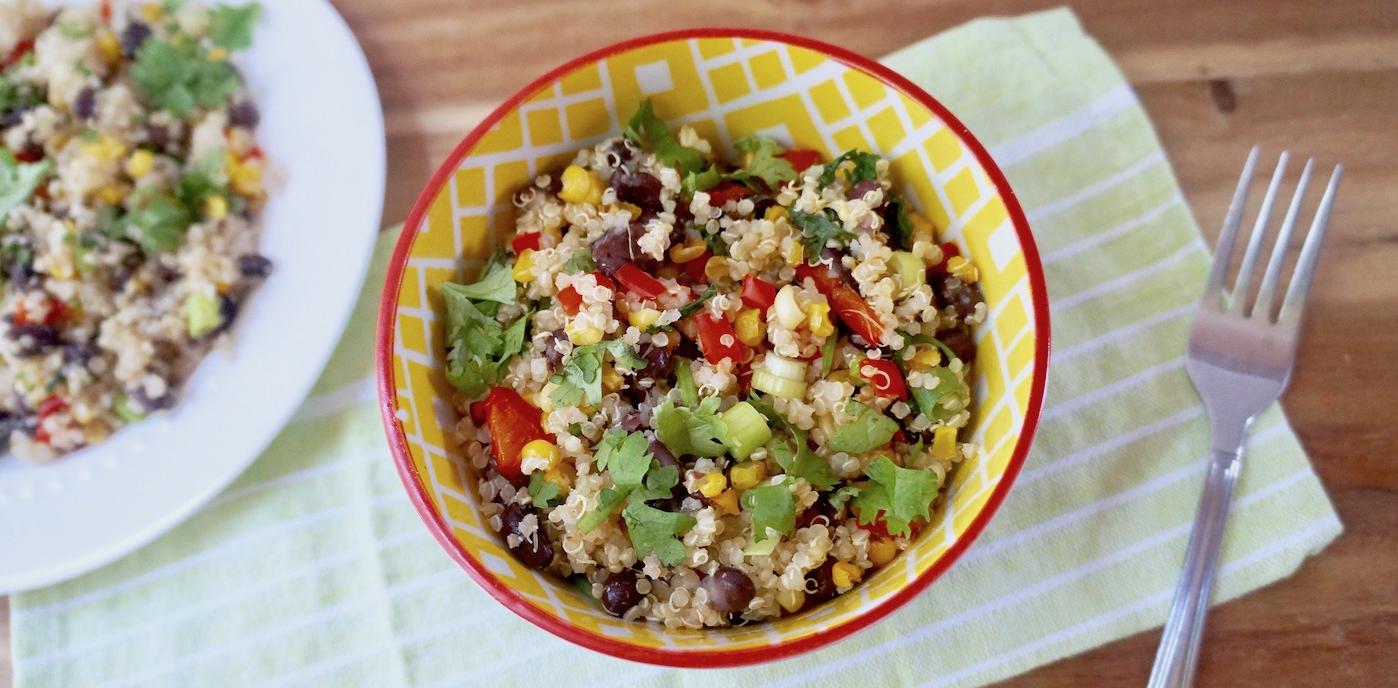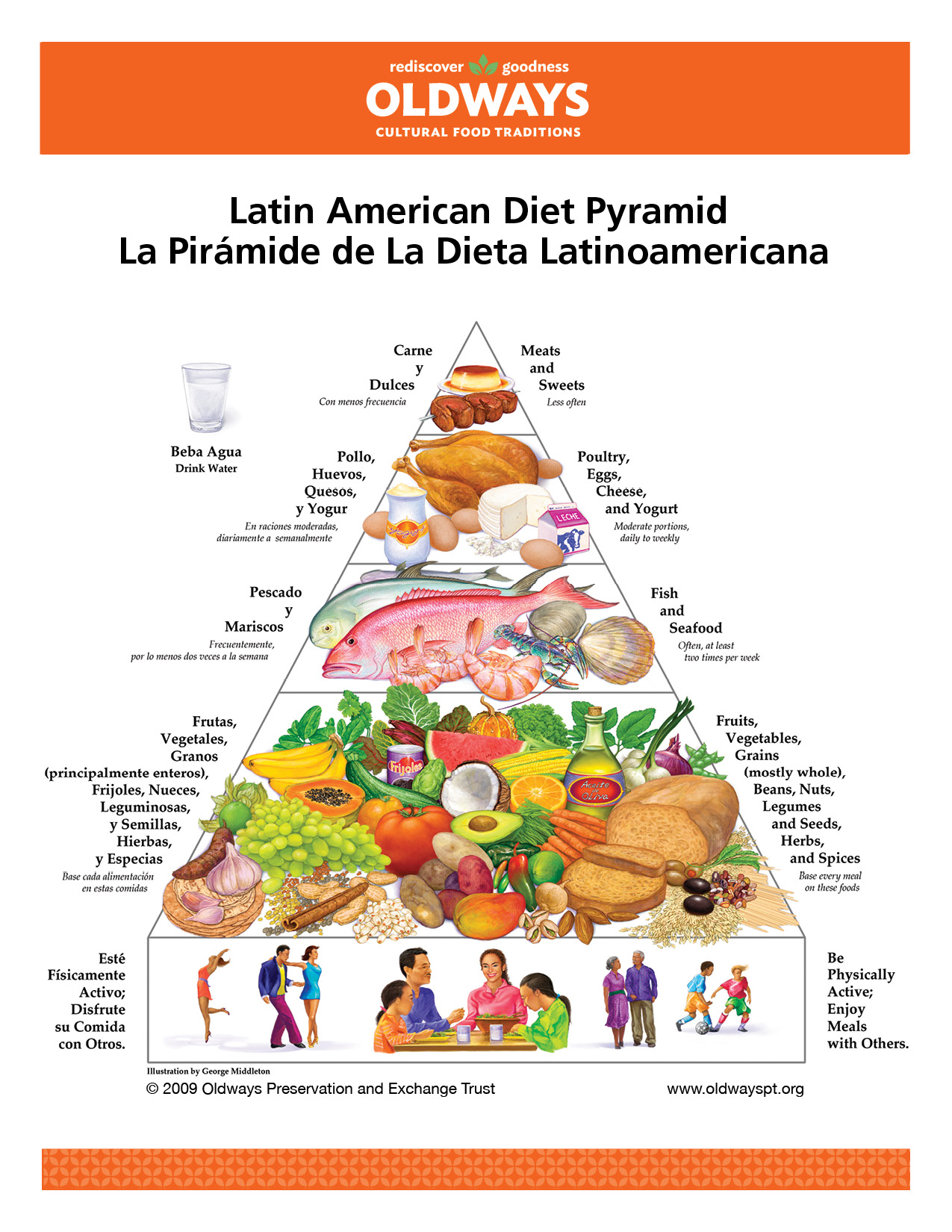Latin Americans include those from Mexico, The Caribbean, Central, and South America. That covers a lot of territories and throughout the region there are very different uses of grains, produce traditional dishes, and spices. In honor of National Hispanic Heritage Month, we’re spending September 15 to October 15 celebrating all the vibrant, delicious foods of the Latin American Heritage Diet. Take a look at our Common Foods List and the Oldways Latin American Diet Pyramid for a guide to a diet of flavorful, affordable, and easy to prepare foods that reflect the great range of culinary traditions of this vast geographic area.
Whole grains are a significant part of heritage diets around the world, but did you know that Latin America is home to many grains? When it comes to grains, traditional Latin American cuisine frequently uses corn, rice, and ancient grains like amaranth and quinoa. Of these grains, corn may be the most dominant in Latin American cuisine. In Mexico, we jokingly call it vitamin “T” because it shows up at almost every meal in the form of Tortillas, Tostadas, Tamales, Tlacoyos, Tacos dorados, and the list goes on! In celebration of the variety of grain options available in the Latin American Heritage Diet we’d like to spotlight a few of our favorites:
Corn
Corn is native to the Americas and an essential ingredient in our diets, and also in our world. Corn has a pleasantly sweet taste, making it ideal for side dishes. Corn is a versatile ingredient you can purchase the fresh version during late summer and early fall. The flour version-vitamin “T” it’s ideal to cook for baked goods, tortillas, tamales and tlacoyos. At the store corn is an ingredient in more than 3,000 grocery products. When shopping for corn, avoid labels that say “degerminated” look for the world whole-grain corn or whole corn.
Try this corn recipe: Easy Chicken Tostadas
Rice
Rice is grown on every continent except Antarctica and has been a staple of culture and cuisines for millennia. Rice has a neutral, toasty flavor and pairs very well with nearly anything. In Latin America is used as a side dish, desserts and more. Mexico has a traditional dish called “Arroz a la Mexicana” which uses homemade tomato sauce or tomato puree to create the reddish color. When shopping for rice look for a whole grain version. The color could be brown, red, black or other colors.
Try this rice recipe: Arroz con Pollo (Rice with Chicken)
Amaranth
Amaranth is technically a pseudo-grain and a staple of the Aztecs, with a long history in Mexican and Peruvian cuisine. In Mexico, it is typically found popped with honey as a sweet snack called “Alegria”. Amaranth has a light and nutty to peppery taste with a pleasantly sweet, grassy aroma. In Latin American cuisine is typically enjoyed as a breakfast porridge or polenta style recipes. You can also find it in cereals, bread, cereal bars, crackers, and pancakes. This gluten-free grain is considered a “complete protein”, because it contains all nine essential amino acids which are often not the case in grains.
Try this amaranth recipe: Blueberry Amaranth Porridge
Quinoa
Quinoa is technically a pseudo-grain (related to swiss chard and beets), it was considered sacred to the Incas and has been central to Bolivian and Peruvian cuisine for centuries. It’s grown in the Andes mountains, but some US farmers in high altitude areas near the Rockies are starting to cultivate their own. Quinoa as Amaranth previously mention is one of the few plant foods that serves up a complete protein. Quinoa has a taste with hints of grassiness, pairs well with nearly anything. It is popular as a fluffy side dish, pilafs, soups, salads, and baked goods. Over the last few years, quinoa has gained a lot of popularity and makes a big appearance into cereal flakes, cookies and more. Quinoa is also available in other colors red, purple and black.
Try this quinoa recipe: Peruvian Quinoa and Orange Salad
A Taste of Latin American Heritage
If you’re not familiar with Oldways’ A Taste of Latin Heritage, our six-week cooking curriculum focused on foods of Latin America, then get ready to be inspired by some seriously delicious food.
Our well-loved cooking classes are offered at locations around the country, and there are many planned for these upcoming months. For more information, check out our class directory and see if there’s one happening near you. And, if the curriculum hasn’t made it to your town yet, consider signing up to teach a class! Anyone can become certified, and we’re always looking for people that love food and cooking. Becoming a teacher is a great way to share your passion for food and good health with your community.
National Hispanic Heritage Month Calendar
Celebrate along with us! Download our Hispanic Heritage Calendar (English | Spanish) for an activity you can do each day to learn about ingredients and get healthy tips.
National Hispanic Heritage Month is the perfect time to enjoy exploring Latin American heritage cuisine!
-Oldways Heritage Diet Curriculum Coordinator
READ MORE
Culturally Tailored Lifestyle Program Improves Health of Hispanic Americans with Diabetes
Latin American Cuisines by Region
The Grains of African and Latin American Heritage








